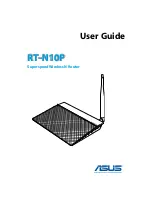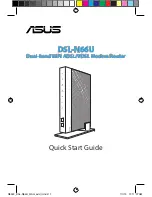
CMM-9301-V3.1S
Bluetooth 4.0 Single Mode HCI Module
SPEC No.
CMM-9301-V3.1S
BLE HCI module
Revision
3.4
State
2013-12-13
C-MAX printed
2013-12-13
Version
English
Page
7 of 9
C-MAX
•
Host product is required to comply with all applicable FCC equipment authorizations regulations,
requirements and equipment functions not associated with the transmitter module portion,
compliance must be demonstrated to regulations for other transmitter components within the host
product; to requirements for unintentional radiators (Part 15B). To ensure compliance with all non-
transmitter functions the host manufacturer is responsible for ensuring compliance with the
module(s) installed and fully operational. If a host was previously authorized as an unintentional
radiator under the Declaration of Conformity procedure without a transmitter certified module and a
module is added, the host manufacturer is responsible for ensuring that after the module is installed
and operational the host continues to be compliant with the Part 15B unintentional radiator
requirements. Since this may depend on the details of how the module is integrated with the host,
we suggest the host device to recertify part 15B to ensure complete compliance with FCC
requirement: Part 2, Subpart J, Equipment Authorization Procedures, KDB784748 D01 v07, and
KDB 997198 about importation of radio frequency devices into the United States.
OEM RESPONSIBILITIES TO COMPLY WITH FCC REGULATIONS
The CMM-9301-V3.1S Module has been certified for integration into products only by OEM integrators
under the following conditions: This device is granted for use in Mobile only configurations in which the
antennas used for this transmitter must be installed to provide a separation distance of at least 20
centimeters from all persons and not be co-located with any other transmitters except in accordance
with FCC and Industry Canada multi-transmitter product procedures.
As long as the two conditions above are met, further transmitter testing will not be required. However,
the OEM integrator is still responsible for testing their end-product for any additional compliance
requirements required with this module installed (for example, digital device emissions, PC peripheral
requirements, etc.).
IMPORTANT NOTE: In the event that these conditions cannot be met (for certain configurations
or co-location with another transmitter), then the FCC and Industry Canada authorizations are
no longer considered valid and the FCC ID and IC Certification Number cannot be used on the
final product. In these circumstances, the OEM integrator will be responsible for re-evaluating
the end product (including the transmitter) and obtaining a separate FCC and Industry Canada
authorization.
OEM LABELING REQUIREMENTS FOR END-PRODUCT
The CMM-9301-V3.1S module is labeled with its own FCC ID Certification Number. The FCC ID
certification numbers are not visible when the module is installed inside another device, as such the
end device into which the module is installed must display a label referring to the enclosed module. The
final end product must be labeled in a visible area with the following: “Contains: FCC ID:
2ABBXCM9301V312013”.
The OEM of the CMM-9301-V3.1S Module must only use the approved antenna(s) listed above, which
have been certified with this module. The device carries FCC authorization and is marked with the FCC
ID Number. Whilst any device into which this authorized module is installed will not normally be
required to obtain FCC authorization, this does not preclude the possibility that some other form of
authorization or testing may be required for the finished device.



























